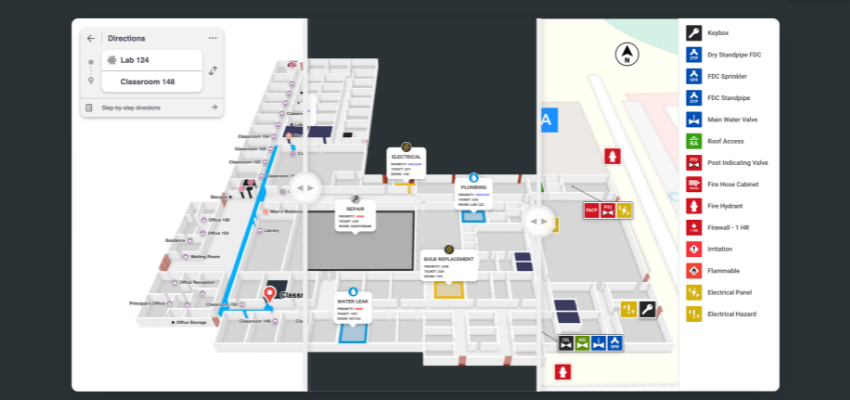Show:
Understanding the Differences between Traditional VPNs and ZTNA
The demand for secure remote access to corporate networks and resources will only keep on growing as the world becomes more digitized. There are various ways for organizations to protect themselves as they adapt to distributed workforces, cloud-based applications, and evolving threat landscapes. Two of these popular options are traditional VPNs (Virtual Private Networks) and ZTNA (Zero Trust Network Access). Both technologies aim to provide secure remote access, but they differ significantly in their approach to access control, security model, and scalability.

Understanding the differences between these options is crucial for organizations seeking to implement effective and future-proof remote access solutions. Read on to get a good idea of what an organization is signing up for when choosing to use a traditional VPN package or a free ZTNA solution like what Mamori.io offers.
Traditional VPNs
The go-to solution for providing remote workers with secure access to corporate networks, traditional VPNs function by creating encrypted tunnels over public networks such as the internet. This setup allows users to connect to the corporate LAN as if they were physically present in the office. Using a VPN, remote workers can access files, applications, and resources securely, regardless of their location. For example, a sales representative working from a coffee shop can use a traditional VPN to securely access customer data stored on the company’s servers.
However, traditional VPNs have drawbacks that can be particularly apparent in today’s dynamic and cloud-centric environments. One of the key drawbacks of traditional VPNs is their reliance on a perimeter-based security model, which assumes trust once inside the network perimeter. Once authenticated, users are typically granted broad access to the entire network. Such a setup raises the risk of unauthorized access and lateral movement within the network. Additionally, traditional VPNs may struggle to scale and adapt to the changing needs of modern organizations, especially as they migrate to hybrid and multi-cloud environments.
ZTNA
In contrast to traditional VPNs, ZTNA takes a more granular and Zero Trust-based approach to access control. The Zero Trust model, popularized by Forrester Research, challenges the notion of trust within the network perimeter and advocates for a “never trust, always verify” mindset.
With ZTNA, access to resources and applications is based on a user’s identity, device posture, and contextual factors such as location and time of access. For example, a remote employee accessing sensitive financial data may be required to undergo additional authentication steps, such as multi-factor authentication, to verify their identity and ensure secure access.
ZTNA solutions use micro-segmentation, identity-based access controls, and dynamic policy enforcement to limit access to specific resources on a need-to-know basis. By implementing strict access controls and verifying all access attempts regardless of location or network boundary, ZTNA reduces the attack surface and mitigates the risk of unauthorized access and lateral movement within the network.

A Summarized Comparison of Traditional VPNs and ZTNA
So while both traditional VPNs and ZTNA aim to provide secure remote access, they differ significantly in their approach in terms of access control, security model, and scalability. Here’s a summary of their differences:
Access Control Model
- Traditional VPNs rely on a perimeter-based security model that grants users broad access to the entire network once authenticated.
- ZTNA adopts a Zero Trust approach that verifies all access attempts regardless of location or network boundary, limiting access to specific resources based on user identity and contextual factors.
Security Posture
- Traditional VPNs encrypt data traffic and provide secure tunnels for remote access but may struggle to prevent unauthorized access and lateral movement within the network.
- ZTNA reduces the attack surface and mitigates security risks by enforcing strict access controls and verifying all access attempts, enhancing the overall security posture of the organization.
Scalability and Flexibility
- Traditional VPNs may face challenges in scaling and adapting to modern environments, especially as organizations migrate to hybrid and multi-cloud architectures.
- ZTNA offers greater scalability and flexibility by supporting secure remote access for distributed workforces, cloud-based applications, and hybrid environments and enabling organizations to enforce consistent security policies across all network environments.
Considerations when Choosing between Traditional VPN and ZTNA
When deciding between traditional VPNs and ZTNA solutions, several factors should be considered to determine which option best aligns with the organization’s needs and priorities.
First, organizations should evaluate their security requirements and risk tolerance. Traditional VPNs may be sufficient for organizations with relatively simple network architectures and lower security needs. ZTNA, on the other hand, offers more robust security controls and risk mitigation capabilities, making it suitable for organizations with higher security requirements and compliance mandates.
Second, organizations should assess their scalability and flexibility needs. If scalability and adaptability to modern environments such as hybrid and multi-cloud architectures are critical, ZTNA may offer a more future-proof solution compared to traditional VPNs. Additionally, organizations should consider factors such as ease of deployment, management overhead, and user experience when evaluating VPNs and ZTNAs.
Ultimately, the decision between traditional VPNs and ZTNA should be based on a thorough assessment of the organization’s security, scalability, and usability requirements. This choice should also consider the user’s long-term strategic objectives and budget constraints. Only by matching their needs with their options can organizations ensure that they’re making a practical decision without sacrificing security and accessibility.

 Return to Previous Page
Return to Previous Page








